![]()
![]()
![]()
Use LEFT and RIGHT arrow keys to navigate between flashcards;
Use UP and DOWN arrow keys to flip the card;
H to show hint;
A reads text to speech;
115 Cards in this Set
- Front
- Back
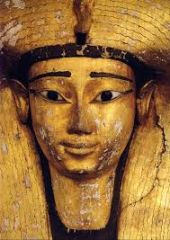
. |
Ahhotep I Who: Aahotep What: Egyptian Queen- wife of Seqenenre Where: Thebes When: 17th Dynasty Why: Dynasty 17 was a time of strong women -Tomb filled with different war art- ceremonial battle axe. Tomb shows the Militaristic nature of the times -Fly necklace in tomb- given to soldiers who stuck to enemies like flies -Magnificent jewelry in Tomb: shows thebans still had access to substantial resources during SIP -Most known for her treasure |
|
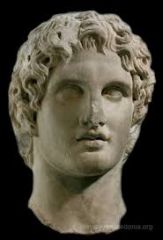
. |
Alexander the Great Who: Alexander the Great What: Ruler of Greece Where: Alexandria When: 332 BCE Why: Conquered Egypt and seen as a liberator from the Persian controlled Egypt and founded Alexandria |
|

. |
Amon-Re Who: Amon-Re What: God Where: Thebes When: NK Why: Expelled Hyksos rulers at thebes and attributed the success to Amun- then as grew in importance combined with Re -God's Wife of Amun: gave the royal family (usually pharaohs daughter even more power) -Temple of Amun becomes powerful -Considered top god during 18th dynasty and fathers the pharaohs |
|
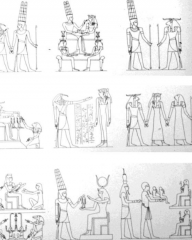
. |
Birth Narrative Who: Hatshepsut and Amenhotep III What: Birth Narrative Where: Deir El-Bahri and Karnak When: 18th dynasty Why: Form of Legitimation- shows Amun-re fathering the Pharaoh |
|
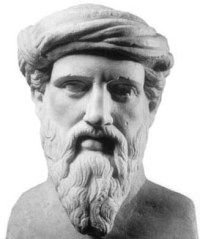
. |
Cambyses Who: Cambyses What: Persian ruler that conquered Egypt Where: Egypt When: 525 BCE Why: Began the Persian Rule of Egypt. Was very unpopular with Egyptians because he tried to reduce the incomes of politically influential temples -Lost a good part of his army in the desert -Egyptians did not like him |
|

. |
Deir el Medinah Who: Craftsmen in Valley of the Kings What: City Where: Western Thebes When: Dynasty 18-20 Why: example of government/state planned community, men who worked here and lived here had fancy tombs -highly literate city so left behind important artifacts |
|
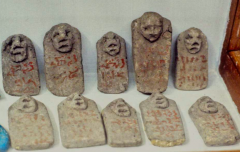
|
Execration Texts Who: scribes What: Execration Texts on pottery and figurines Where: Throughout Egypt When: Late OK-NK- very important in the middle kingdom Why: Was a list of the enemies of the pharaoh -important source of info about the political structure of Syria-Palestine during MK -map of cities mentioned in the texts |
|
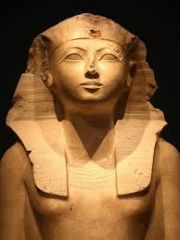
. |
Hatshepsut Who: Hatshepsut What: female Pharaoh Where: Deir el-bahri When: Dynasty 18 Why: Helped to reestablish Egypt after the SIP -Has a birth narrative to legitimize her rule -Mortuary temple is famous for architectural sophistication and exquisite low relief decoration
|
|

. |
God's Wife of Amun- head gear is important Who: Osorkon IV made important- Unmarried Royal Women What: Office of the God's Wife of Amun Where: Thebes When: TIP Why: Osorkon IV used to control the theban area -made royal family even more powerful by saying the unmarried female was the wife of divine Amun |
|
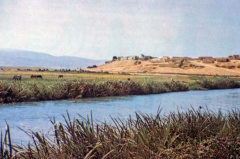
. |
Kadesh Who: Ramesses II What: City Where: Kadesh When: Dynasty 19 Why: Site of the Battle of Kadesh- fight against the Hittites for control of Syria. -earliest battle that we can reconstruct in detail -both sides claim victory- then made a peace treaty |
|
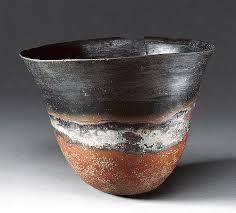
. |
Kerma Cup Who: Artists What: Tulip shaped beakers Where: Kerma When: SIP Why: Shows talent of Kerma Artists -Show the style of art during this time from the influence of Nubia and Kerma. Specific to this |
|
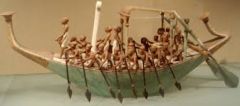
. |
Meket-re Models Who: Meket-Re What: Tomb models Where: Meketra's Tomb When: Dynasty 11 Why: Showed info about life and architecture |
|

. |
Libyan Anarchy Who: Libyans What: messy Libyan Dynasty that ruled Egypt Where: Egypt When: Dynasty 22-24 Why:- third intermediate period had lots of foreign influence- like this -messy second part when Dynasty 22-25 are all ruling concurrently -Egypt was split up by many powers and rulers- not sting unification
|
|
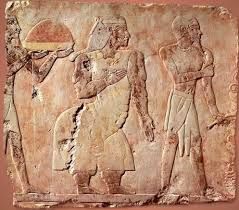
. |
Queen of Punt Who: Queen of Punt What: Relief from Hatshepsut's Mortuary temple Where: Thebes When: Dynasty 18 Why: This relief is important because it shows foreign trade: she is the queen of the people the Egyptians trade with |
|
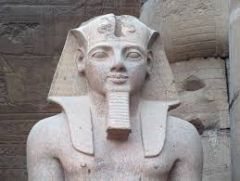
. |
Ramesses II Who: Ramesses II What: Pharaoh of Egypt Where: Qantir When: Dynasty 19 Why: Undertook major building activities- famous rock-cut temples at Abu , Very powerful ruler: ruled for 67 years and had over 100 kids -Battle of Kadesh- peace treaty and ended up marrying Hittite Princess -Ramesseum |
|
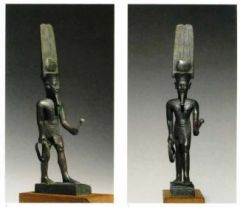
. |
Saite Period Who: Saite Rulers What: Time period when Saites ruled Egypt Where: Egypt When: Dynasty 26 Why: Saites had ambitious and aggressive foreign policy -Brief, late renaissance of Egyptian culture -time of notable artistic achievement and building -Art was archaizing- investigation and restoration of pyramids |
|
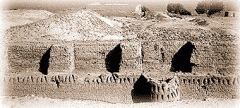
. |
2nd Cataract Forts Who: Dynasty 12 Kings What: Fortresses Where: 2nd Cataract When: Dynasty 12 Why: One of the accomplishments of Dynasty 12 -Protected and regulated trade
|
|
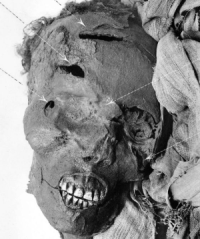
. |
Seqenenre Tao Who: Seqenenre Tao What: Dynasty 17 King Where: Thebes When: Dynasty 17 Why: Conflict between Hyksos Ruler and Seqenenre -mummy shows terrible head wounds -one of first kings to oppose the Hyksos actively |
|
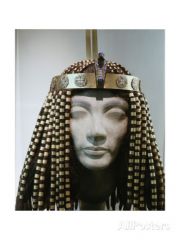
. |
Sit-Hathor-Yunet Who: Sit-Hathor-Yunet What: Princess Where: Lahun When: Dynasty 12 Why: her tomb shows high quality of minor arts in MK |
|
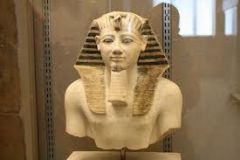
. |
Thutmosis III Who: Thutmosis III What: King Where: Thebes When: Dynasty 18 Why: Help establish most extensive empire -co-regent with step-mother Hatshepsut -called the egyptian Napoleon |
|
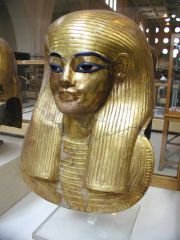
. |
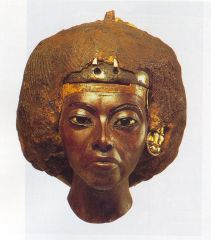
Tiye Who: Tiye What: Wife of Amenhotep III Where: Amarna When: Dynasty 18 Why: had a lot of power during husband and sons reign -worked in foreign relations and was the first queen to have her name recorded on official acts -Mother of Amenhotep IV |
|
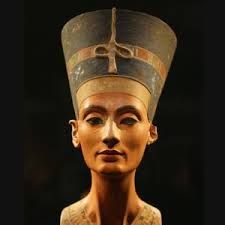
. |
Nefertiti Who: Nefertiti What: Wife to Akhenaten Where: Amarna When: Dynasty 18 Why:- Religious reforms: part of the divine Triad- family was divine. Plays important role in new religion |
|
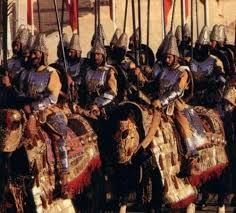
. |
Persian Empire Who: Persians What: Persian Empire Where: Egypt When: Dynasty 27 Why: Time when kings were living in Persia and not concerned about Egypt -First to rule totally outside of egypt -Persian rule was not popular and many revolts -Trade became important |
|
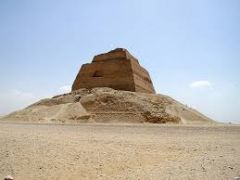
. |
Meydum Pyramid Who: Huni What: Royal Burial site Where: Meydum When: Dynasty 3 Why: Marks transition from step Pyramid to true pyramid during dynasty 3 and 4
|
|
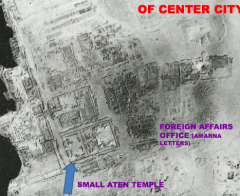
. |
Amarna Who: Akhenaten What: City Where: Amarna When: end of Dynasty 18 Why: Powerful during Amarna period where Religious change from Atum to Aton (sun God) -Art showed realism and intimacy of the Royal family |
|
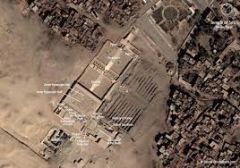
. |
Abydos Who: Osiris What: City Where: Abydos When: Throughout egyptian history: especially popular in MK Why: Cult center for Osiris (burial of osiris located here) -Kings list found here in Temple made by Seti -Pilgrimage destination- many people put stele in Cenotaphs |
|
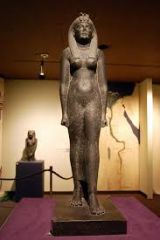
|
Cleopatra VII Who: Cleopatra VII What: Ruler of Egypt Where: Egypt When: Ptolemaic era Why: Egyptians thought she was a reincarnation of Isis -They loved her -She committed suicide |
|
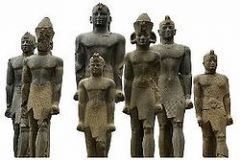
|
Dynasty 25 Who: Dynasty 25 Kings- nubians What: Nubian rule of Egypt Where: Egypt- Gebel Barkal When: Dynasty 25 Why: restoration of traditional Egyptian values, culture, art, and architecture -reunification of Egypt in Dynasty 25 |
|
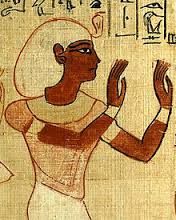
|
Heri-Hor Who: Heri-Hor What: High Priest of Amun Where: Middle and upper Egypt When: Dynasty 21 Why: Priest, military officer- had lots of power and control of Middle and Upper Egypt |
|
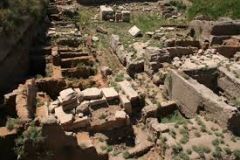
|
Heracleopolis Who: Egyptians What: city Where:Heracleopolis When: FIP- 9/10 Why: Fought for control of Egypt and lost to Thebes who reunited the country in the MK |
|
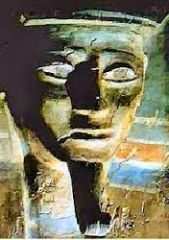
|
Kamose Who: Kamose What: King Where: Thebes When: 17th Dynasty Why: continued the fight against the Hyksos and captured the capital of Avaris |
|
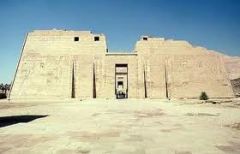
|
Medinet Habu Who: Ramesses III What: Medinet Habu Where: Luxor When: Dynasty 20 Why: Mortuary temple of Ramesses III, the last great native ruler of egypt, that showed battle scenes against the Sea People |
|
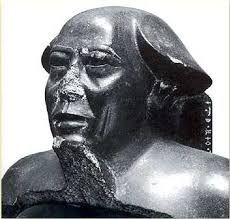
|
Montuemhat Who: Montuemhat What: Priest and Mayor Where: Thebes When: Dynasty 25 and 26 Why: Was the effective ruler of much of upper egypt. His tomb is one of the major monuments of Thebes and is the largest private tomb there -tomb adapts a variety of earlier styles |
|

|
Per-Ramesses Who: Ramesses II What: City Where: Per-Ramesses When: Dynasty 19 Why: Capital city under Ramesses II who was the most famous king of the Ramesside era |
|
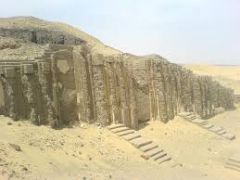
|
Niched/Palace Facade Who: Kings and elite What: Palace Facade Where: Tombs and temples When: Throughout Egyptian History Why: Shows mesopotamian influence in Egyptian architecture
|
|
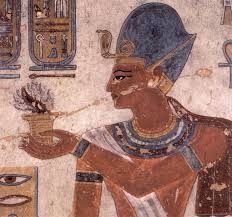
|
Ramesses III Who: Ramesses III What: King Where: Thebes or Egypt When: Dynasty 20 Why: Last Great monumental native ruler -Medinet Habu -Reorginized the Country's internal administration and army and crushed major rebellion in Libya -repulsed the people of the sea |
|

|
Scarab Who: Dead What: Heart Scarab Where: On mummified body When: throughout egyptian history Why: Helps get to afterlife during weighing of the heart ceremony- prevents from confessing sins |
|
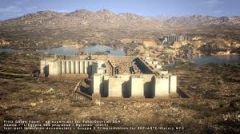
|
Semna Who: Senusret I What: city with forts Where: Semna When: Dynasty 12 Why: Forts were built here to manage trade and to protect Egypt |
|
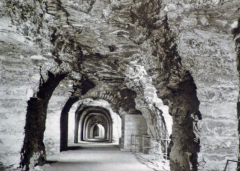
|
Serapeum Who: Serapis What: mortuary temple Where: Saqqara When: Late Period Why: shows combination of greek and egyptian values to link them together -Mortuary temple to the Osiris Apis |
|
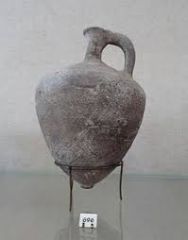
|
Tell el-Yehudiya ware Who: Hyksos What: juglets Where: Egypt When: Second Intermediate Period Why: marker for the Hyksos and the Second intermediate period |
|
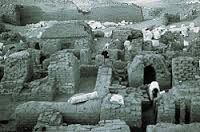
|
Abydos Cenotaphs Who: The dead What: Cenotaph Where: Abydos When: MK Why: Empty tomb made to commemorate a person with a memorial stelae |
|
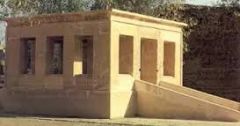
|
Senuseret I White Chapel Who: Senuseret I What: White Chapel Where: Karnak When: Dynasty 12 Why: gave geographical list of nomes and other info of the time period -commemorated his Year 30 jubilee |
|

|
Naucratis Who: Greeks What: City Where: Naucratis When: Ptolemaic period Why: Greek Colony in egypt where egyptians became second citizens |
|
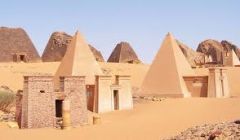
|
Kush Who: people of Kush and Egyptians What: African Kingdom Where: Kush-near first cataract When: 25th dynasty Why: Dynasty 25 rulers ruled over kush and egypt at the same time because they were close neighbors and they conquered egypt |
|
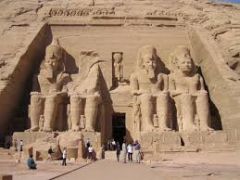
|
Abu Simbel Who: Ramesses II What: rock cut temple Where: Abu Simbel When: Dynasty 19 Why: Massive rock cut temple that commemorates Ramesses deification- deified himself |
|
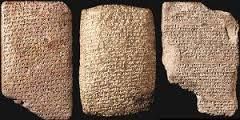
|
Amarna Letters Who: Akhenaten What: Amarna Letters Where: Amarna When: Dynasty 18 Why: Shows diplomatic letters written between king and near eastern rulers -shows foreign policy |
|
|
Archaism |
Archaism Who: Artists What: Archaism Where: Temples, tombs When: Throughout egyptian history Why: Egyptians often went back to old ways of art and use past motifs later on -ex. Saite art was archaizing |
|

|
Colossi of Memnon Who: Amenhotep III What: Colossi of Memnon Where: Western Thebes When: dynasty 18 Why: stood guard at mortuary temple of Amenhotep III- grand tomb became tourist attraction in the classical period -great king |
|
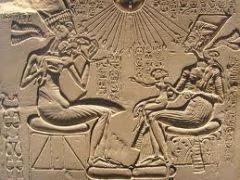
|
Amarna Art Who: Akhenaten What: Amarna Art Where: Amarna When: Amarna Period Why: shows more naturalistic art- shows intimacy of Royal family -Shows worship of Aten |
|

|
Dynasty 26 Who: Saites What: Dynasty 26 Where: Egypt When: Saite period Why: During this time Saites conquered and consolidated power or upper and lower egypt. Egyptians accepted their rule -late renaissance of egyptian culture |
|
|
Great Chiefs of the Me |
Great Chiefs of the Me Who: Libyan Army Commanders What: Great chiefs of the Me Where: Libya When: around Dynasty 22 Why: Libyan Army commanders defended from Libyan Prisoners of war- captured by Ramesses III and settled in military colonies all over egypt |
|
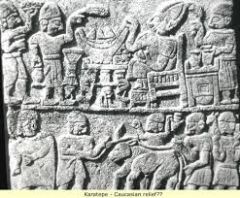
|
Hittites Who: Hittites What: Battle of Kadesh Where: Kadesh When: Dynasty 20 Why: Battle of Kadesh against them to control syria- no one won but claimed they did. Earliest battle that can be reconstructed -made peace treaty |
|
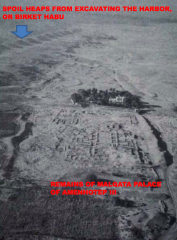
|
Malkata Who: Amenhotep III What: Palace complex Where: Thebes When: Dynasty 18 Why: Huge palace complex filled with residential palaces, festival hall, temple to amun -built out of mud brick - gives insight to architecture and the importance of the king |
|
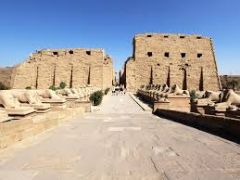
|
Karnak temple Who: Amun, Mut, Montu What: Karnak Temple Where:Karnak When: NK Why: Major temple complex to Amun, Mut, Montu -religious capital of egypt throughout the NK -Becomes the key state temple and is a major source of power and wealth |
|

|
Piye Who: Piye What: Kushite King of Egypt (Nubia) Where: Memphis and egypt When: Dynasty 25 Why: Undertook a military campaign to conquer Egypt -captured Memphis -recorded his campaign on the piye stela staying his campaign was almost a holy mission -Returned to Napata and did not follow up his victory so campaign had little effect |
|
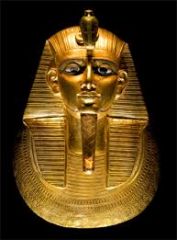
|
Psusennes I Who: Psusennes I What: King- funerary mask Where: Tanis When: 21st Dynasty Why: One of the few tombs found intact. Burials goods were as nice as others even during the TIP |
|
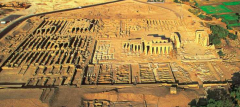
|
Ramesseum Who: Ramesses II What: Ramesseum Where: Thebes When: Dynasty 19 Why: Mortuary temple of Ramesses II -Shows the power and wealth of Ramesses II |
|
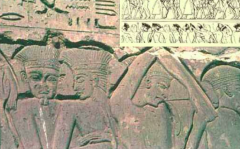
|
Sea Peoples Who: Sea Peoples What: foreigners- not entirely sure where from Where: in scenes at Medinet Habu When: Dynasty 20 Why: One group is known as the Philistines -Ramesses III repulsed the sea peoples in two battles and it is recorded at Medinet Habu -group of people made up of loose federation of groups -had destroyed the hittite empire and were overrunning syria and palestine |
|
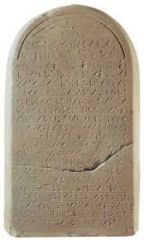
|
Semna stele Who: Senuseret III What: Semna stele Where: Semna When: Dynasty 12 Why: Describes the hatred to nubians during year 16 of his reign -shows opinion of Nubia and plans for military conquest |
|
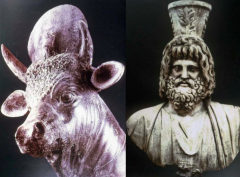
|
Serapis Who: Serapis What: State God Where: Egypt When: Ptolemaic Dynasty Why: Represents the combination of Greek and Egyptian values- Used to link Greeks and egyptians together -Cult of Serapis linked pharaonic traditions with the new hellenistic culture |
|
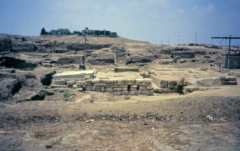
|
Tanis Who: Dynasty 21 Kings What: City Where: Tanis When: TIP Why: City where dynasty 21 ruled, Major architectural works at dynasty 21 here -looted other sites and broth the monuments of other kings to Tanis (found obelisks from Ramesses II) -Temple of Amun at Tanis -Kings buried inside temple of Amun |
|
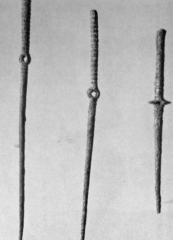
|
Toggle Pin Who: Egyptians What: Toggle Pins Where: On clothing When: SIP Why: Toggle Pins attached non-egyptian style clothing at the left shoulder -Shows foreign influence during SIP |
|

|
Western Defuffa Who: Nubians What: Cult center Where: Kerma When: Kerma Period Why: shows the nubian cult worship practices |
|
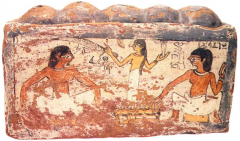
|
Cartoon Art Who: Artists What: Cartoon Art Where: provinces When: 1st intermediate period Why: shows artistic changes in the FIP. Represents crude art loss of arts
|
|
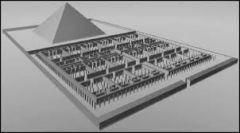
|
Labyrinth Who: MK Pharaohs What: Labyrinth Where: Egypt When: MK Why: shows new innovations of MK pyramids from previous burials- Substructure was more Labyrinthine |
|
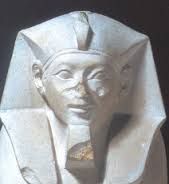
|
Ahmose Who: Ahmose What: Pharaoh Where: Thebes When: Dynasty 17 and Dynasty 18 Why: chased Hyksos out of egypt and defeated them -invaded Kush and ensured the supremacy of egypt -inaugurated the new kingdom |
|
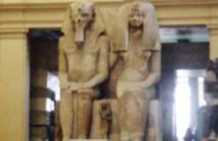
|
Amenhotep III Who: Amenhotep III What: King Where: Thebes When: Dynasty 18- pre-Amarna Why: built a palace complex (Malqata): shows power and wealth -Helped to re-establish control internally over all Egypt and extending Egyptian power abroad -colossi of Memnon
|
|
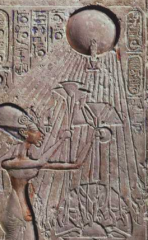
|
Aten Who: Aten What: God of Sun Where: Amarna When: Amarna Period Why: During this time- Akhenaten prohibited all other worshiping to other gods besides Aten -almost considered monotheism -shown as sun disk presenting life to the world |
|

|
Osiris Who: Osiris What: God of the Underworld Where: Abydos When: Throughout egyptian history Why: He represents the deceased king- reason behind all procedure of mummification -represents afterlife |
|

|
Deir el-Bahri Who: Nebhepetre Mentuhotep II (NHRM II), Hatshepsut, Thutmoses What: complex of mortuary temples Where: Western Thebes When: Dynasty 11 and then Dynasty 18 for the last two Why: Saff tomb architecture going on- mimicking of it in mortuary temples |
|
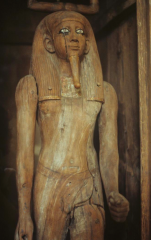
|
King Auibre Hor Who: King Auibre Hor What: King Where: Dahshur When: Dynasty 13 Why: Buried in Dynasty 13 and his magnificent Ka shows that there was no decline in artistic standards during this time |
|
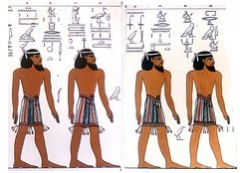
|
Canaanites Who: Canaanites What: Ruled Egypt Where: Avaris When: Dynasty 15 had major rule Why: Ruled Egypt in Dynasty 15 under the name of Hyksos -Introduced mainstream ancient near eastern culture -opened up country to foreign influences -taught egyptians the need to defend themselves which resulted in a professional army |
|
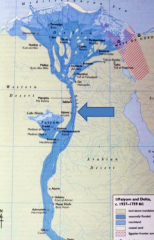
|
Itj-tawy Who: MK Kings What: City Where: Itj-Tawy When: Dynasty 12 Why: Became the new capital during the MK. Shows the change of power and control during MK |
|
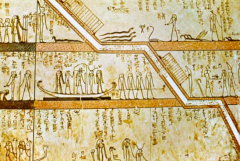
|
KV 34 Who: Thutmosis III What: Tomb Where: Valley of the Kings When: Dynasty 18 Why: Shows new characteristics of Dynasty 18 burials -decorations with stick figures and papyrus like character -Amduat scenes to describe the underworld and how dead got there -Tomb is red and white colors |
|
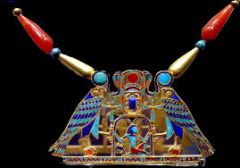
|
Lahun Treasure Who: Senuseret II What: Treasure Where: Lahun When: Dynasty 12 Why: Robbed in Antiquity and only the snake left -lots of jewelry was found in Princesses Tomb though |
|
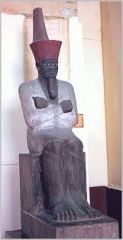
|
Nebhepetre Mentuhotep II Who: NHRMII What: King Where: Thebes When: Dynasty 11 Why: reunited the country after the 2nd part of Dynasty -starts MK |
|
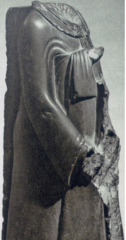
|
Persian Period Who: Persians What: Persian period Where: Egypt When: Dynasty 27 and 31 Why: Time when kings were living in Persia and not concerned about Egypt -First to rule totally outside of egypt -Persian rule was not popular and many revolts -Trade became important |
|

|
Ptolemy I Soter Who: Ptolemy I Soter What: Greek King of Egypt Where: Egypt When: 306 BCE (ptolemaic era) Why: founded ptolemaic dynasty and ruled egypt after Alexander the Great died |
|

|
Rishi Coffin Who: The dead What: Rishi Coffin Where: In Tomb- mainly thebes When: Dynasty 17 Why: New type of coffin with a feathered pattern on the lid -shows new type of burial style |
|

|
Wenamun Who: Wenamun What: Priest of Amun Where: Karnak When: Dynasty 20 Why: His story showed the waning of Egyptian power over the Eastern Mediterranean |
|
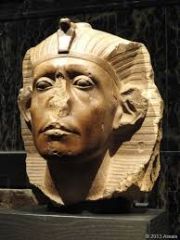
|
Senuseret III Who: Senuseret III What: King Where: Itj-tawy When: Dynasty 12 Why: Crushed the power of the provincial Nomarchs and created a middle class -semna stele |
|

|
Tumulus Who: dead What: Tumulus Where: Kerma When: SIP Why: Burial pit -size of grave mount and the contents shows the importance of the deceased- showed nubian burial patterns during this time |
|
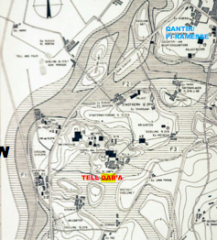
|
Tell el-Dab'a Who: Hyksos What: City Where: Tell el-Dab'a (delta) When: SIP Why: Capital city of Hyksos rule. First foreigners to rule Egypt. Also known as Avaris |
|
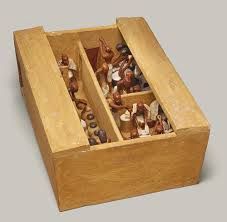
|
Tomb models Who: Meketra What: Tomb Models Where: Meketra's Tomb When: dynasty 11 Why: give info about daily life and architecture of buildings at the time |
|

|
Valley of The Kings Who: NK Kings What: Burial tombs Where: Valley of the Kings When: NK Why: Burial site for Pharaohs of the New Kingdom- shows the power and wealth of the New Kingdom Pharaohs |
|
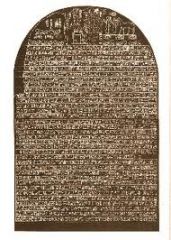
|
Piye Stela Who: Piye What: Piye Stela Where: Temple of Amun (Gebel Barkal) When: Dynasty 25 Why: -recorded his campaign to conquer Egypt on the pity stela staying his campaign was almost a holy mission -depicted more egyptian that the egyptians -Returned to Napata and did not follow up his victory so campaign had little effect |
|
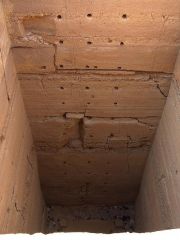
|
Persian Shaft Tomb Who: dead What: Persian Shaft Tomb Where: Tomb When: Late Period Why: way to protect the dead burial from tomb robbers |
|

|
Akhenaten Who: Akhenaten What: King Where: Amarna When: Dynasty 18 Why: Made huge religious reforms that made some believe his new faith was monotheistic but he is also divine as the son of Aten -Acted as the intermediary of Aton -fostered a naturalistic art style |
|

|
Alexandria Who: Ptolemaic rulers What: Capital Where: Alexandria When:Ptolemaic era Why: Became a greek city in Egypt and egytians became second class citizens here -many scholars came here |
|

|
Avaris Who: Hyksos What: City Where: Avaris When: SIP Why: Capital city of Hyksos rule. First foreigners to rule Egypt. Also known as Tell el Dab'a |
|
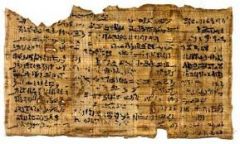
|
Ipuwer Who: Scribes What: Admonitions of Ipuwer Where: Egypt When: FIP Why: Important literary work dating to this time that described the lack of order and chaos in Egypt |
|
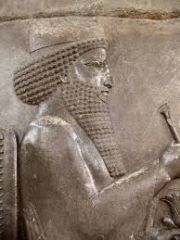
|
Darius Who: Darius I What: Persian ruler over egypt Where: Egypt When: Dynasty 27 Why: Persian Ruler over Egypt. More careful of local sensibilities and he commission temples and restored others -Made trade important and trade routes important |
|
|
Dynasty 27 |
Dynasty 27 Who: Persians What: Persian rule Where: Egypt When: Dynasty 27 Why: Composed of persian kings living in persia and concerned with the persian empire -hated by the egyptians even though they improved trade, made temples and restored others |
|
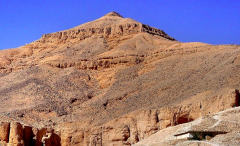
|
The Gurn Who: NK Kings What: The Gurn Where: Valley of the Kings When: NK Why: natural looking pyramid- this is why selected this area to build their tombs |
|
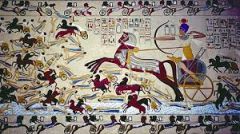
|
Hykos Who: Hykos What: Foreigners that Ruled Egypt Where: Avaris When: Dynasty 15 had major rule Why: Ruled Egypt in Dynasty 15 under the name of Hyksos -first outsiders to conquer egypt -opened up country to foreign influences -taught egyptians the need to defend themselves which resulted in a professional army
|
|
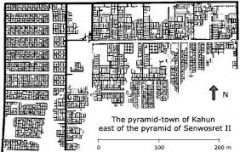
|
Kahun Who: Builders of the pyramid What: Pyramid Town When: Dynasty 12 Where: Kahun Why: Gives important info about daily life in MK |
|
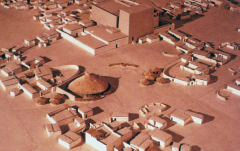
|
Kerma Who: Nubians What: city Where: below third cataract When: Kerma Period Why: Kerma culture was the characteristic material culture assemblage of upper nubia -located on fertile part of nile valley -economy based on agriculture and became very important for trade -middleman on great african trade route |
|
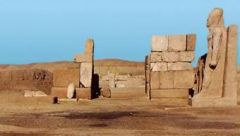
|
Qantir Who: Ramesses II What: City Where: Per-Ramesses When: Dynasty 19 Why: Capital city under Ramesses II who was the most famous king of the Ramesside era |
|
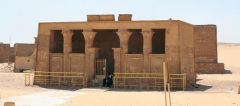
|
Petosiris Who: Petosiris What: High Priest Where: Tuna el Gebel When: Ptolemaic Why: Tomb shows the marriage of greek and egyptian culture especially of rich greeks in Hermopolis |
|

|
Saff Tomb Who: Private individuals/ kings What: Rock cut tomb Where: Western Thebes When: Dynasty 11 Why: unique to Thebian region, preferred style of burial of Pharaoh's Intef I-III- shows change in burials |
|
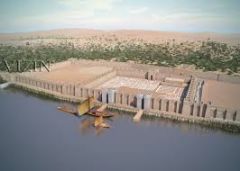
|
Buhen Who: 12th dynasty kings What: Egyptian site Where: Buhen-near 2nd cataract When: 12th dynasty Why: Site of the forts to protect, control and regulate trade in region
|
|
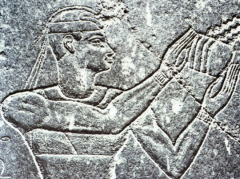
|
Shabako Who: Shabako What: Nubian King Where: Egypt When: Dynasty 25 Why: conquered and reunited Egypt creating an egypto-Nubian state -made shabako stone to record religion |
|
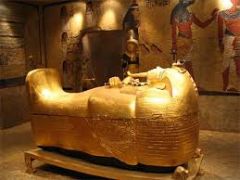
|
Tut's Tomb Who: King Tutankhamun What: Relief from tomb Where: Valley of the Kings, KV62 When: Dynasty 18 Why: Tomb found intact- shows all the wealth and belongings that actually went in tomb -Relief shows Ay performing opening of the mouth ceremony to legitimize Tut's Rule |
|
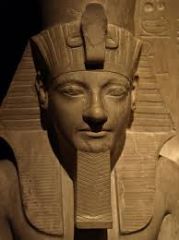
|
Horemhab Who: Horemhab What: General and King Where: Thebes When: Dynasty 18 Why: Last king of dynasty 18 and he had no kids so he appointed Ramesses as his successor |
|

|
Tod Treasure Who: Amenemhat II What: Treasure Where: Tod Temple When: Dynasty 12 Why: Illustrating foreign influence (Aegean, Syrian-Mesopotania) and trade |
|
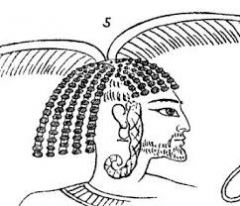
|
Libyans Who: Libyans What: Neighbors to Egypt Where: Libya and Egypt When: Dynasty 21-24 Why: During time of TIP, Dynasties 22-25 all ran concurrently -messy part of Egypt is broken up into little chunks and has more local rulers |
|
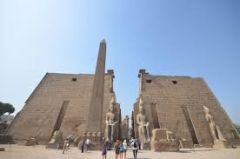
|
Luxor Temple Who: Priests/Amun What: Luxor Temple Where: Thebes When: NK Why: Important in the Opet festival -large complex shows the importance of temples and the success of the NK |
|
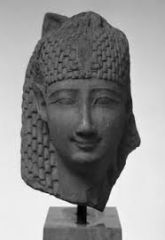
|
Saite Smile Who: Statues/artists What: Saite Smile Where: Statues When: Saite Period Why: characteristic of statues in the saite period -shows transition from little expression to having a slight smile
|
|

|
Gebel Barkal Who: Nubians What: Holy Mountain Where: Gebel Barkal When: Founded in Dynasty 18 Why: Holy mountain with a sanctuary and temples, had a Uraeus on it so seen as holy -shows how nubian kings began to extend authority in the region during the TIP |
|
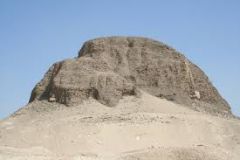
|
Lahun Pyramid Who: Senuseret II What: Lahun Pyramid Where: Lahun When: Dynasty 12 Why: Pyramid that now has a double enclosure wall and other innovations that show the type of burials here -Kings chamber was looted but daughters chamber shows many pieces of jewelry to give insight on style and wealth |
|
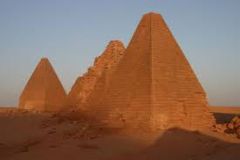
|
Napata Who: Nubians What: Capital Where: Napata When: TIP Why: During this time a separate kingdom emerged and the Nubians started to assert their power from this capital city |
|
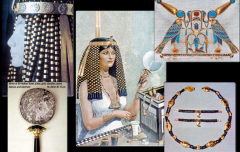
|
Treasure of Sithathoryunet Who: Sithathoryunet (princess) What: Treasure Where: Lahun When: Dynasty 12 Why: Shows high quality of minor arts in MK |
|
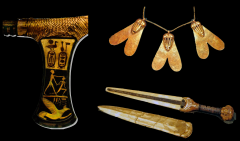
|
Treasure of Ahhotep Who: Ahhotep (queen) What: Treasure Where: Western Thebes When: dynasty 17 Why: Shows military association with these obj- shows power of women- could have been involved in the military |
|
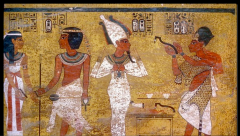
|
Relief from Tut's Tomb Who: King Tutankhamun What: Relief from Tomb Where: KV 62, Valley of the Kings When: Dynasty 18 Why: Shows Ay performing opening of the mouth to legitimize rule |
|
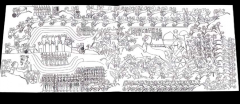
|
Battle of Qadesh Who: Ramesses II What: Picture of Battle of Qadesh When: Dynasty 19 Where: Syria-Palestine Why: Shows battle between Egyptians and Hittites |

